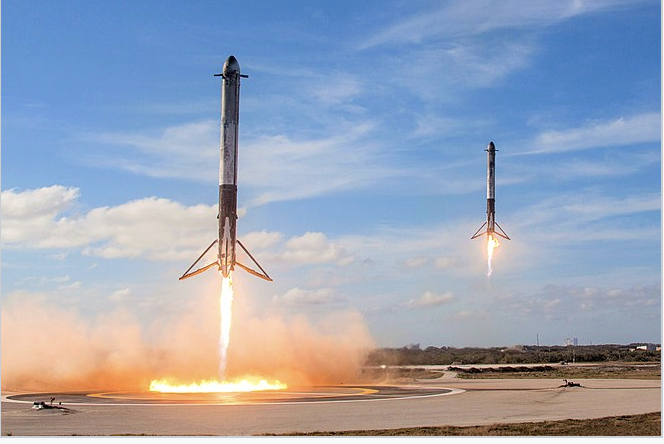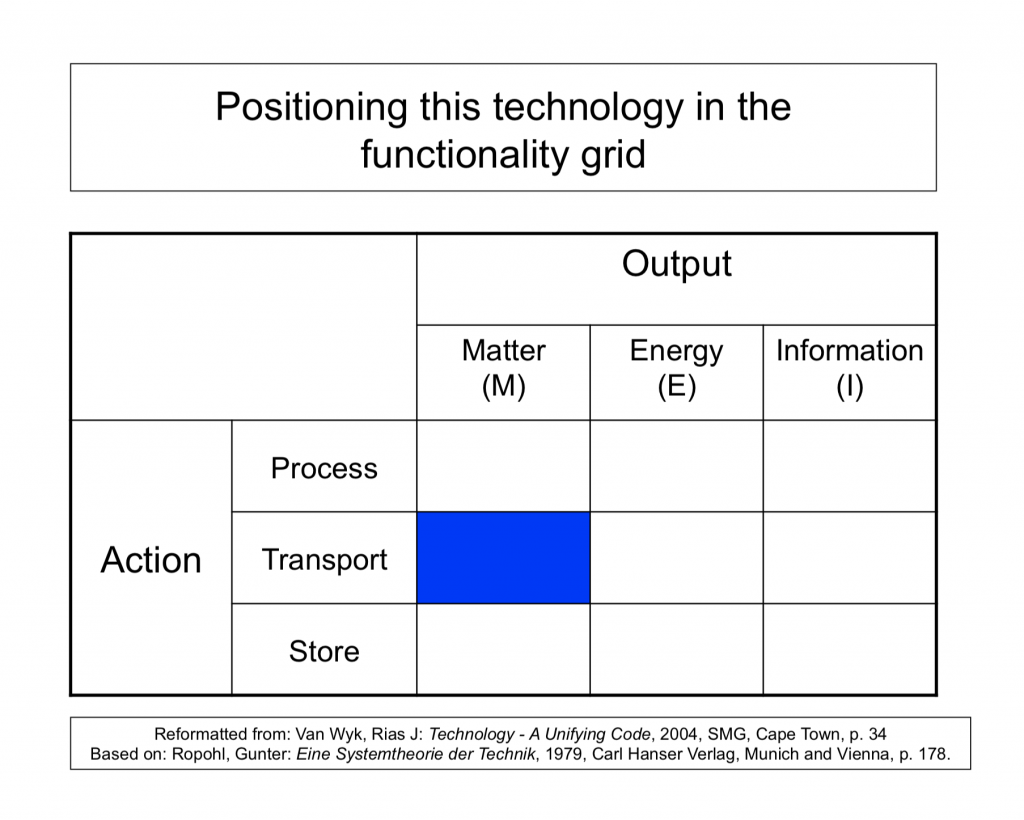
Reusable launch systems are regarded as a Technology Landmark for use in an OmegaMap. They could become the standard for space flight launches or for aerial transportation.
The information presented here is based on various references in Wikipedia –accessed on June 26, 2020. The locus of innovation is a new Principle of Operation.“A reusable launch system is a launch system that includes the recovery of some or all of its stages”. “The SpaceX’s Falcon rocket has a reusable first stage and capsule… and expendable second stage”. “As of May 2020, the only operational reusable orbital class launch systems are the Falcon 9 and Falcon Heavy“. SpaceX has also demonstrated precise vertical landing on movable floating bogies.
The effect of this innovation is to improve the Functionality : Transport-Matter. Its position is indicated on the Functionality Grid. (See diagram below).
Two Functional Performance Metrics are noted. (i) An increase in the ratio matter times distance travelled to matter input required. Translated into cost figures this improvement amounts to a cost saving of roughly fifty percent per launch over non-reusable systems. “SpaceX CEO Elon Musk has said that if one can figure out how to use rockets like airplanes then the cost of access to space will be reduced by as much as a factor of a hundred” (ii) A reduction in the amount of trash left in the environment after the event. In the case of the most modern systems trash is reduced to almost zero.
The Technology readiness level on a scale of 1 to 9 is already TRL9 : i.e., “Actual system proven in operational environmen”.
Technical terminology is covered in: Van Wyk, Rias, (2017) Technology: Its Fundamental Nature, Beau Bassin, Mauritius, LAP LAMBERT Academic Publishing, (http://amzn.to/2Avsk3r)
For descriptions of:
- Technology Landmark; pp. 83-84, Diagram 11.1, Stage 3
- Principle of operation; p. 20
- Functionality; pp. 24-25
- OmegaMap; pp. 92-93
- Functionality Grid; pp. 29-32
- Technology readiness levels; pp. 22-23
